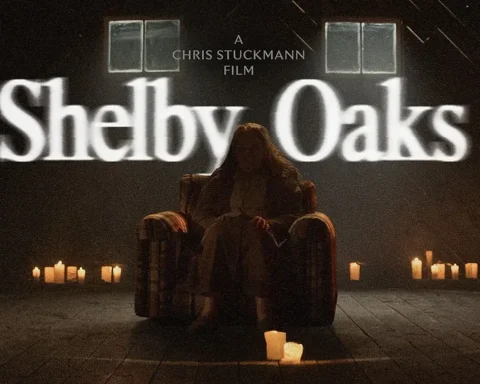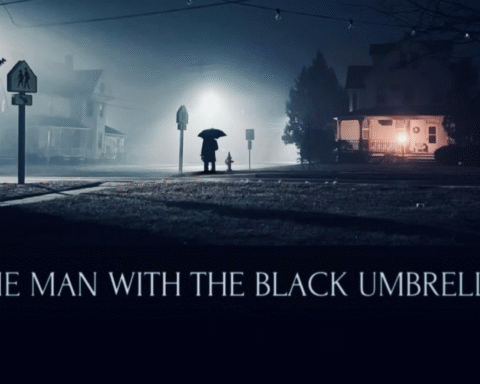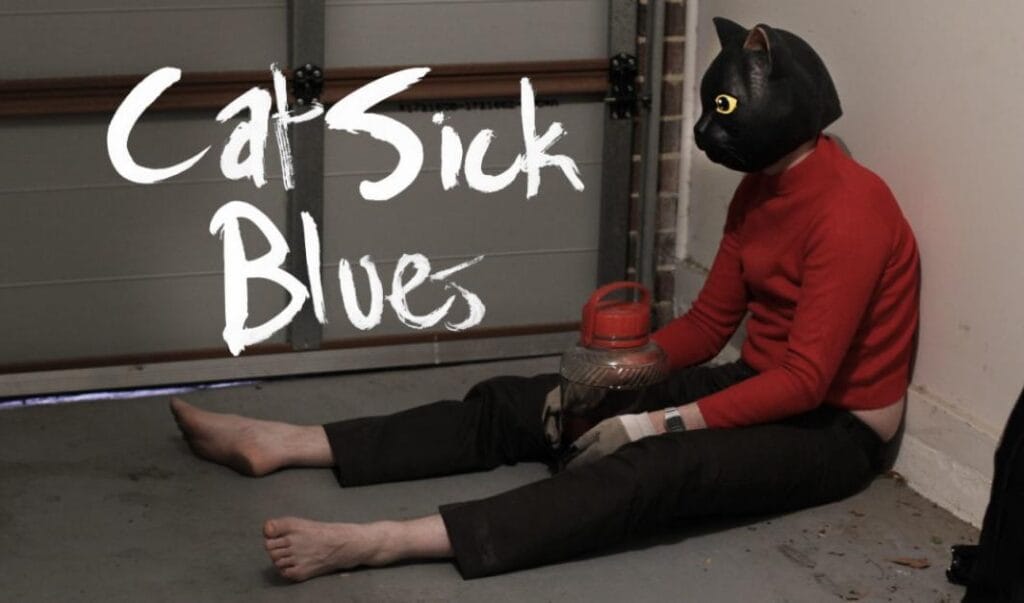Laid to Rest (2009) and its sequel Laid to Rest 2: Chromeskull (2011) are two brutal, high-octane entries into the slasher genre that never quite reached mainstream recognition but have carved out a loyal cult following. Directed by Robert Hall, the films serve up a nightmarish landscape of gore and terror, wrapped in a sleek, metallic aesthetic that pushes the boundaries of the genre. These films don’t aim to explore the supernatural or the existential; rather, they hinge on a more visceral, grounded horror — a masked killer relentlessly stalking his prey in a blood-soaked reality. But beneath the surface of their raw, unrelenting violence lies a more nuanced conversation about identity, anonymity, and the evolution of the slasher villain in the 21st century. They were the movies of the two first days of the Shadowz Halloween Special and it was an unmissable watch for horror purists.
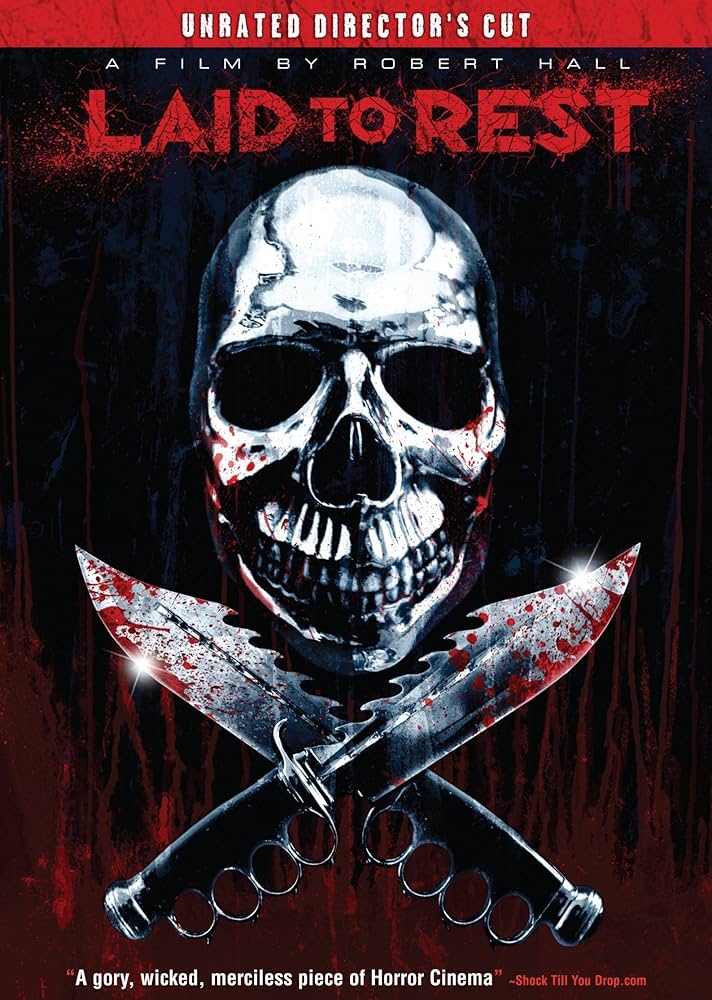
Laid to Rest (2009): A Subversion of the Final Girl Trope
The first Laid to Rest film introduces us to an unnamed woman who wakes up in a coffin with no memory of who she is, where she is, or how she got there. The horror begins immediately, both for her and the audience, as we learn she’s the latest target of Chromeskull, a sleek, terrifying killer whose signature metal mask and love for documenting his kills on a video camera instantly set him apart from the masked killers of decades past.
This setup might seem like a straightforward slasher film formula, but Laid to Rest cleverly subverts the genre’s expectations in several key ways. First, our protagonist isn’t the typical “final girl” with some latent, predetermined strength. She is disoriented, vulnerable, and spends much of the film in survival mode, rather than consciously trying to fight back. This vulnerability makes her a more relatable and empathetic figure than many over-stylized horror protagonists.
What Laid to Rest does particularly well is create an atmosphere of sheer dread without relying on overwrought exposition or deep mythology. Chromeskull doesn’t come with an elaborate backstory or supernatural abilities. His presence alone is enough to drive the film’s terror. The killer’s dispassionate, robotic approach to murder, capturing everything on film for some undisclosed audience, feels eerily modern, playing into society’s ever-increasing obsession with voyeurism and media.
Visually, Hall delivers a highly polished film on a modest budget. The practical effects stand out, offering some of the most visceral kills seen in the genre. The emphasis on realism in the gore – limbs being torn, heads being split open in all their squelchy, unflinching glory – positions Laid to Rest as a modern evolution of the splatter sub-genre. It embraces the over-the-top violence of its predecessors but without tipping into camp or parody.
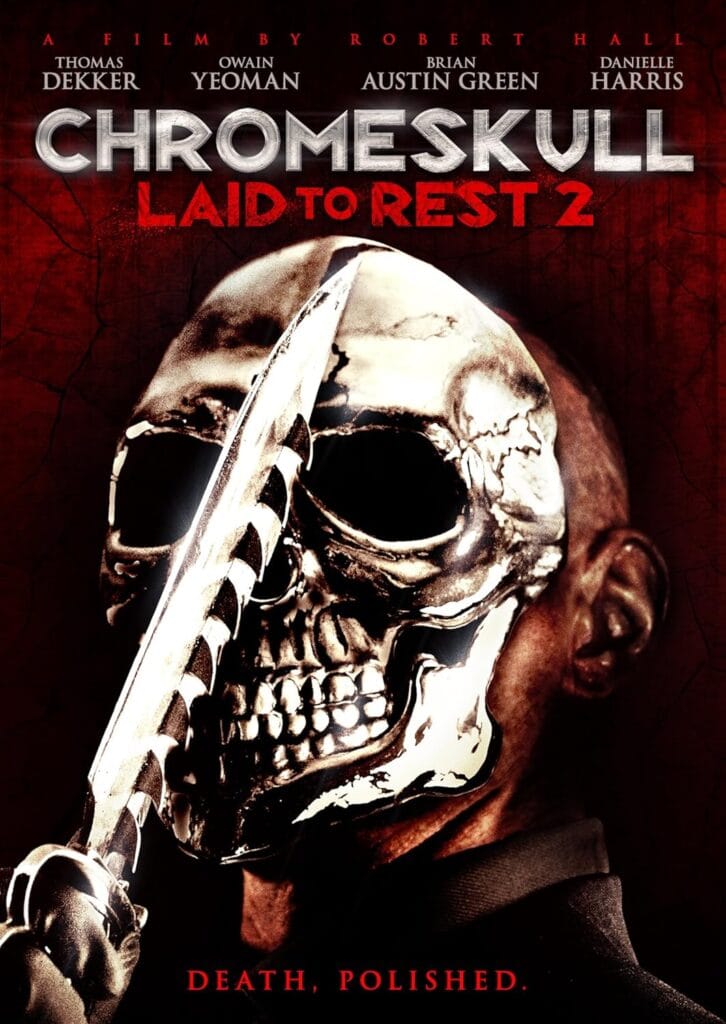
Laid to Rest 2: Chromeskull (2011): Expanding the Mythos
The sequel, Laid to Rest 2: Chromeskull, ups the ante in almost every conceivable way, transitioning from a claustrophobic survival horror into a larger, more action-driven thriller. Here, Hall peels back the curtain on Chromeskull’s world, revealing a shadowy organization that supports and facilitates his killing sprees. The introduction of corporate horror—a board of loyal henchmen and high-tech equipment—elevates Chromeskull from lone maniac to an almost industrialized killing machine.
This shift in narrative scope could easily have gone wrong, turning a lean and brutal slasher into something convoluted and bloated, but Chromeskull maintains its tight focus on gore and survival, even as it broadens the world. It’s a bold move that changes the dynamic from the lone-masked-killer formula established in the first film. Chromeskull, once a terrifying enigma, becomes something of a tragic antihero, though still unspeakably evil. His dehumanized persona—hidden behind that iconic chrome mask—begins to show fractures, as we learn more about his obsessive tendencies and the team working to sustain his reign of terror.
The return of practical effects is, again, a highlight. Chromeskull doubles down on its gore effects, presenting death scenes that are simultaneously creative and grotesque, designed to push even hardened horror fans to their limits. In one scene, a victim’s face is peeled off entirely, a gruesome set-piece that epitomizes the film’s meticulous attention to physical violence. The franchise’s willingness to let violence linger on screen becomes a commentary in itself, questioning the limits of audience desensitization to blood and brutality in the digital age.
The Evolution of Chromeskull: An Iconic but Underappreciated Slasher Villain
What sets the Laid to Rest series apart from other modern slashers is Chromeskull himself. Unlike the dream-invading Freddy Krueger or the silently looming Michael Myers, Chromeskull is part of a lineage of killers who have adapted to our technological times. His fixation on documenting his murders with a video camera makes him a contemporary of the real-life horrors we see proliferating on the internet: the mass shooter live-streaming their crime, the dark-web voyeur. This makes him uniquely unsettling for an era that’s increasingly defined by the blending of violence and media consumption.
Chromeskull’s mask, a polished, reflective surface that obscures his identity, also speaks to the modern slasher’s shift from psychological exploration to technological horror. His lack of expression becomes symbolic of his detachment from his acts, removing the emotional charge that would humanize him. In a sense, Chromeskull represents the dehumanization of violence in the age of technology, where acts of atrocity can be rendered cold, distant, and impersonal. He kills not out of a pathological need for vengeance or due to some curse, but simply because he can, and he films it because it’s what our culture now demands—an endless cycle of content, no matter how horrific.
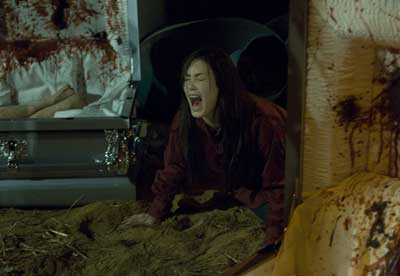
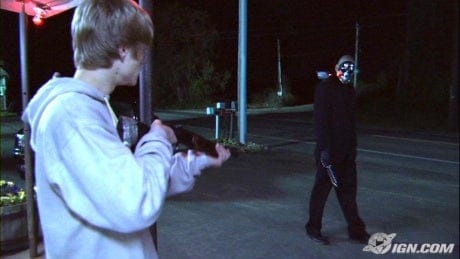
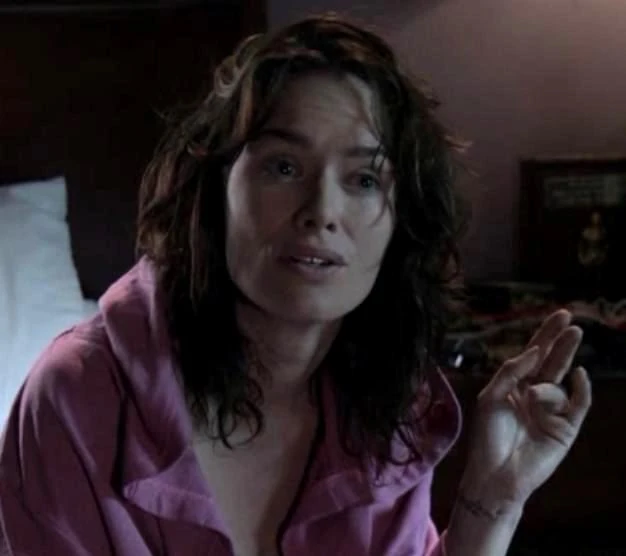

Violent Cinema as Cultural Commentary
At their core, Laid to Rest and Chromeskull are brutal exercises in horror filmmaking, but beneath the gore and carnage is a critique of our relationship with violence and anonymity in the digital age. The films’ dedication to practical effects and refusal to sugarcoat their brutality harken back to the grittier, more unpolished days of 1980s slashers, while their focus on documentation, media, and voyeurism speaks directly to the fears of our current era.
These films don’t necessarily aim to provide the deep psychological scares of The Babadook or Hereditary, but they don’t need to. Instead, they remind us that sometimes, the most terrifying monsters are those that lurk just beneath the surface of our everyday lives—dispassionate, anonymous, and disturbingly efficient. In a world where we’re constantly being watched and recorded, Laid to Rest feels like an eerily prescient reflection of our times, wrapped in the blood-soaked legacy of the slasher genre.
Ultimately, the Laid to Rest series might not reach the iconic status of its predecessors, but for horror fans seeking unrelenting intensity, sleek visuals, and a killer with a disturbingly modern edge, it remains a hidden gem worth revisiting.


